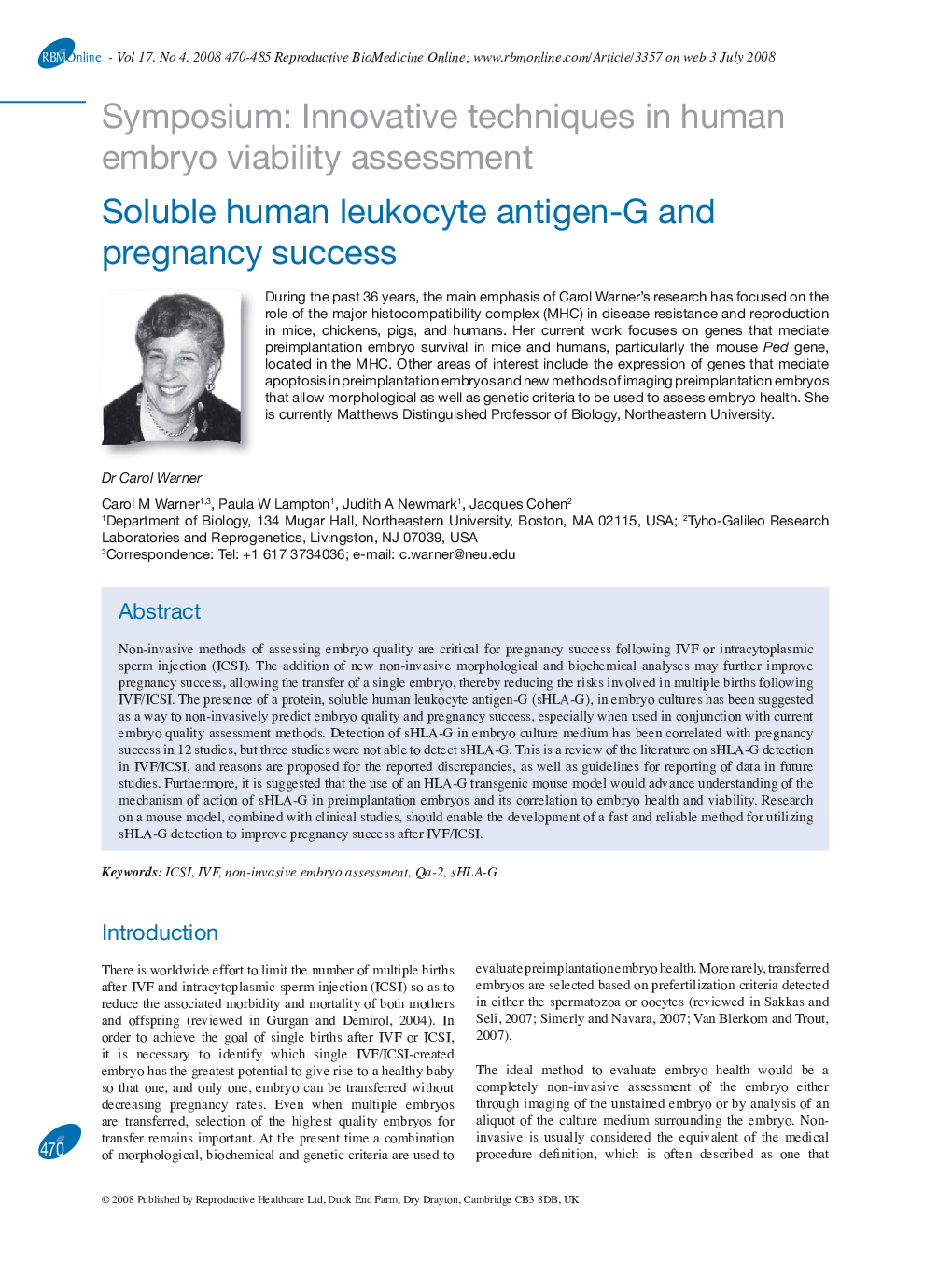| Article ID | Journal | Published Year | Pages | File Type |
|---|---|---|---|---|
| 3972376 | Reproductive BioMedicine Online | 2008 | 16 Pages |
Non-invasive methods of assessing embryo quality are critical for pregnancy success following IVF or intracytoplasmic sperm injection (ICSI). The addition of new non-invasive morphological and biochemical analyses may further improve pregnancy success, allowing the transfer of a single embryo, thereby reducing the risks involved in multiple births following IVF/ICSI. The presence of a protein, soluble human leukocyte antigen-G (sHLA-G), in embryo cultures has been suggested as a way to non-invasively predict embryo quality and pregnancy success, especially when used in conjunction with current embryo quality assessment methods. Detection of sHLA-G in embryo culture medium has been correlated with pregnancy success in 12 studies, but three studies were not able to detect sHLA-G. This is a review of the literature on sHLA-G detection in IVF/ICSI, and reasons are proposed for the reported discrepancies, as well as guidelines for reporting of data in future studies. Furthermore, it is suggested that the use of an HLA-G transgenic mouse model would advance understanding of the mechanism of action of sHLA-G in preimplantation embryos and its correlation to embryo health and viability. Research on a mouse model, combined with clinical studies, should enable the development of a fast and reliable method for utilizing sHLA-G detection to improve pregnancy success after IVF/ICSI.
